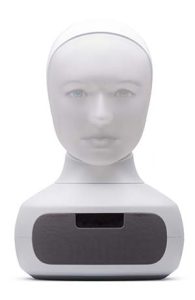Text messaging with a bot is one thing. Asking Alexa and Siri what today’s weather looks like is another. But a robot you can actually touch and feel doing your company’s recruiting? OK, now you’ve gone too far.
Furhat Robotics doesn’t care about my hangups, however, which is why it’s building a sorta-human-like robot to do your interviewing for you. If I had to describe how this thing looks, I’d say it’s a cross between a robot from I, Robot, starring Will Smith and a Barbie Styling Head.
Yeah, let that one sink in for a second.
The Swedish robotics company announced this month that it was partnering with TNG, another Swedish company that specializes in unbiased recruiting to create a bot. It’s name is “Tengai Unbiased.” There’s a blog for those who want to follow the robot’s progress, and there’s even a video promoting the robot.
The initiative promises to assist recruiters in the early stages of the recruitment process, where questions are primarily skill and competency based. They hope to better analyze, understand, and perform competency-based interviews and assessments while eliminating unconscious bias.

“We have worked with unbiased recruitment for years, and have explored various AI-platforms and robotic solutions,” said Åsa Edman Källströmer, CEO at TNG. “With Furhat, we can create an unbiased competence-based selection process and a new and completely unique candidate experience that will engage and enthuse job seekers.
“The combination will help us get even better at finding the best candidates for our customers, increase the diversity in their workplace and help us in our journey and vision to create a more sustainable labour market.”
Solving the bias question is a big hurdle. It’s also a worthy cause. A 2018 study by TNG showed almost 73 percent of candidates believe they have been discriminated against while applying for a job based on age, gender, ethnicity, handicap, sexual preferences, appearance, weight, or health.
After they finish figuring out the bias question, maybe they can get crackin’ on helping human beings get comfortable being interviewed by a machine. That thing is creepy.
